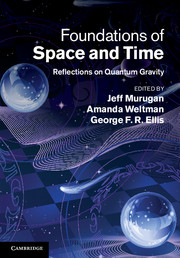
-
Select format
-
- Publisher:
- Cambridge University Press
- Publication date:
- 05 August 2012
- 19 July 2012
- ISBN:
- 9780511920998
- 9780521114400
- Dimensions:
- (247 x 174 mm)
- Weight & Pages:
- 1.03kg, 488 Pages
- Dimensions:
- Weight & Pages:
You may already have access via personal or institutional login
Book description
After almost a century, the field of quantum gravity remains as difficult and inspiring as ever. Today, it finds itself a field divided, with two major contenders dominating: string theory, the leading exemplification of the covariant quantization program; and loop quantum gravity, the canonical scheme based on Dirac's constrained Hamiltonian quantization. However, there are now a number of other innovative schemes providing promising new avenues. Encapsulating the latest debates on this topic, this book details the different approaches to understanding the very nature of space and time. It brings together leading researchers in each of these approaches to quantum gravity to explore these competing possibilities in an open way. Its comprehensive coverage explores all the current approaches to solving the problem of quantum gravity, addressing the strengths and weaknesses of each approach, to give researchers and graduate students an up-to-date view of the field.
Reviews
'Encapsulating the latest debates, this book details the different approaches to understanding the nature of space and time. It brings together leading researchers to explore in a comprehensive coverage all of the current approaches to solving the problems of quantum gravity, addressing the strengths and weaknesses of each approach, to give researchers and graduate students an up-to-date view of the world.'
Source: CERN Courier
Contents
Metrics
Altmetric attention score
Full text views
Full text views help Loading metrics...
Loading metrics...
* Views captured on Cambridge Core between #date#. This data will be updated every 24 hours.
Usage data cannot currently be displayed.
Accessibility standard: Unknown
Why this information is here
This section outlines the accessibility features of this content - including support for screen readers, full keyboard navigation and high-contrast display options. This may not be relevant for you.
Accessibility Information
Accessibility compliance for the PDF of this book is currently unknown and may be updated in the future.


